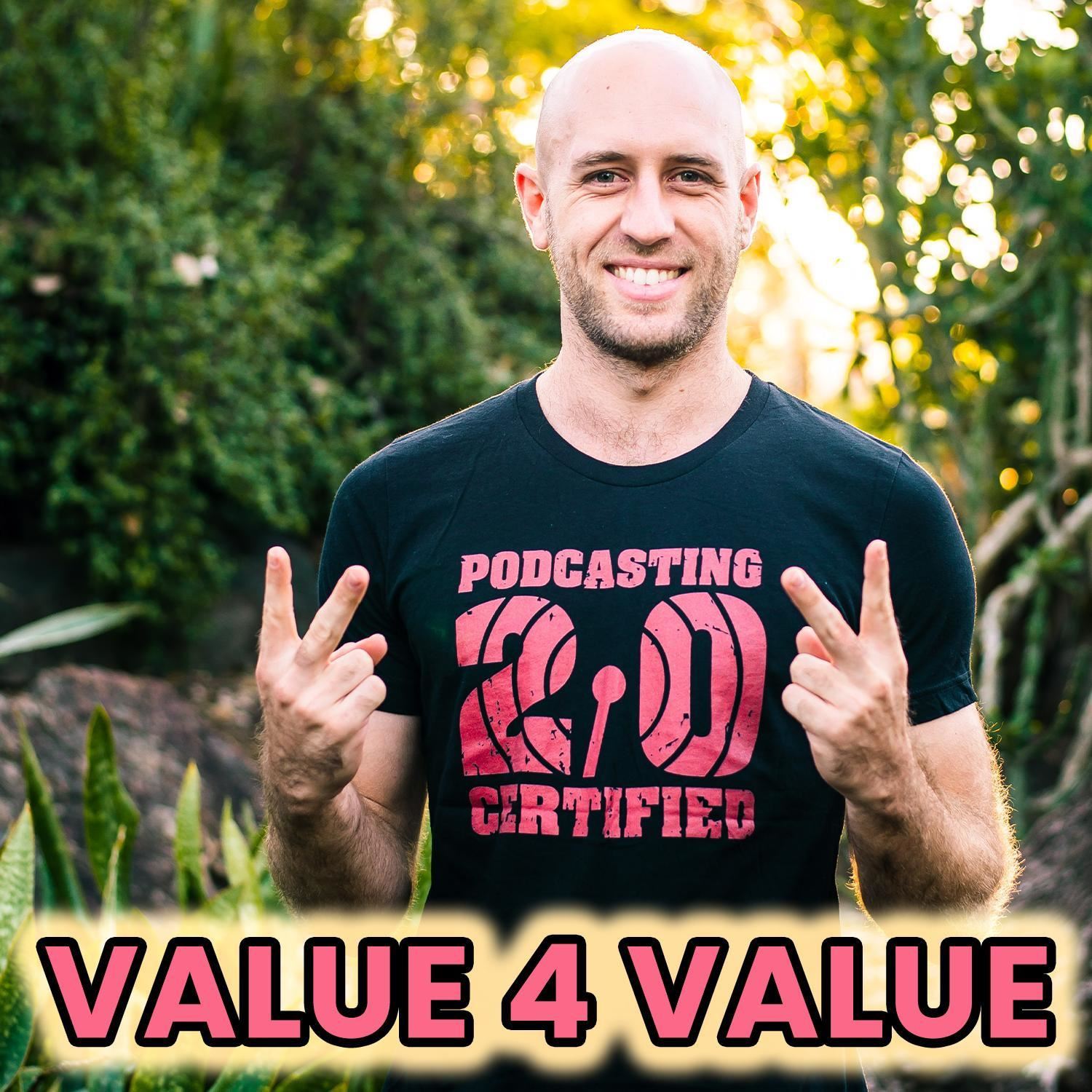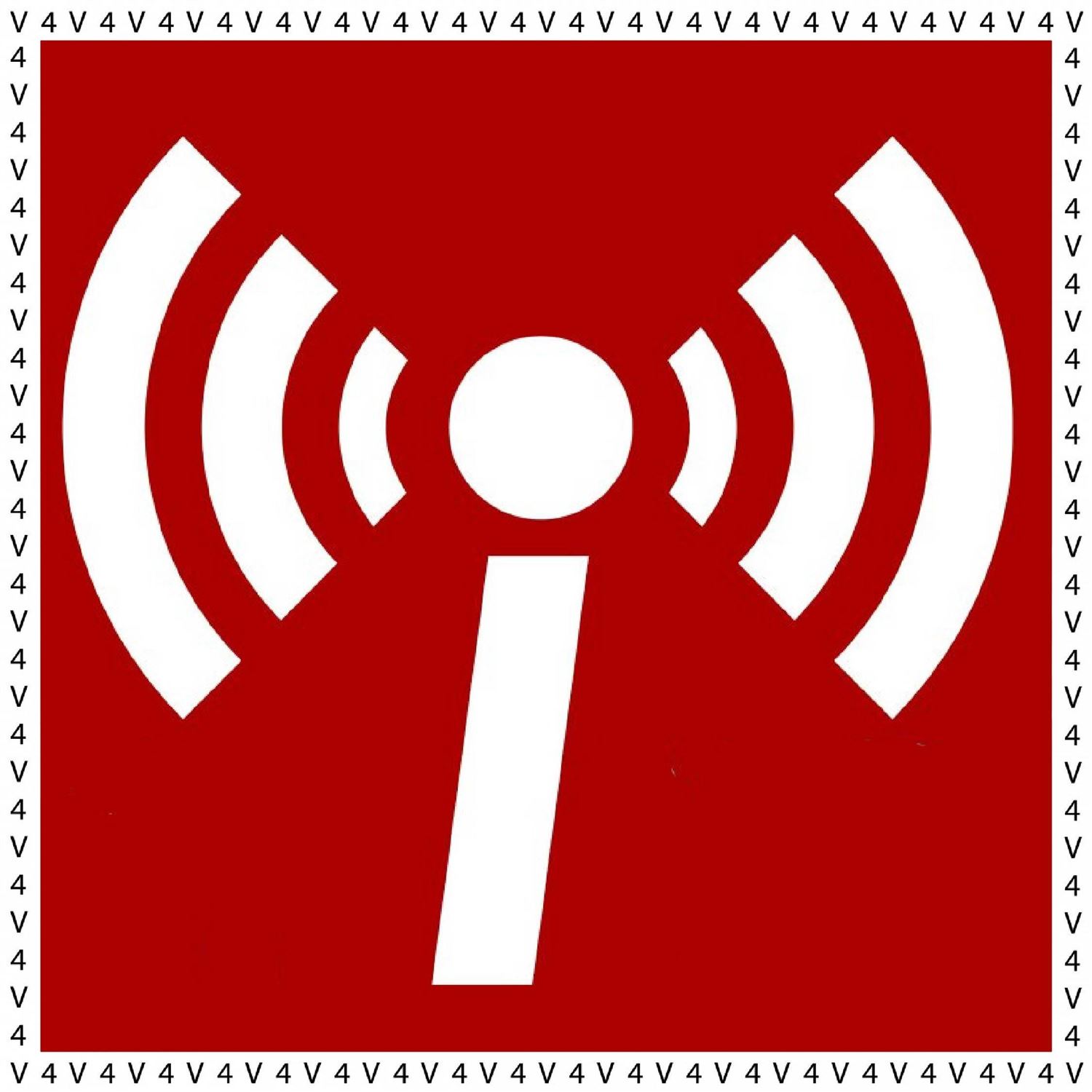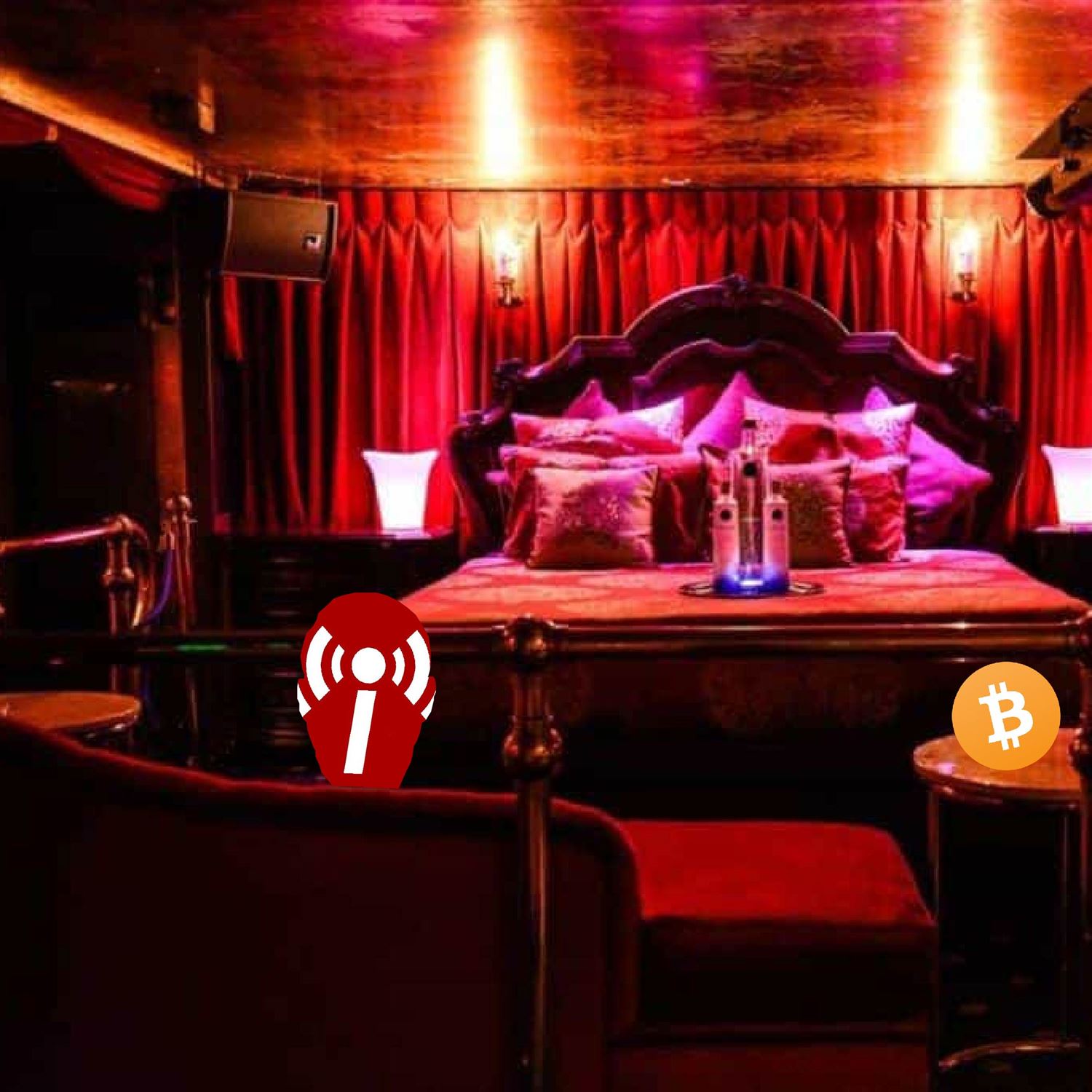Where it all begins.
In Ep #20 we examine the presentation of the PodFather himself (Adam Curry) aided by the PodSage (Dave Jones). P2.0 is spearheading the innovations in podcasting and also the methods of implementing the V4V model (which Adam helped create)!
Value 4 Value Support:
Boostagram: https://www.meremortalspodcast.com/support
Paypal: https://www.paypal.com/paypalme/meremortalspodcast
Connect With Kyrin/Mere Mortals:
Website: https://www.meremortalspodcast.com/
Discord: https://discord.gg/jjfq9eGReU
Twitter/X: https://twitter.com/meremortalspods
Instagram: https://www.instagram.com/meremortalspodcasts/
TikTok: https://www.tiktok.com/@meremortalspodcasts
In Ep #20 we examine the presentation of the PodFather himself (Adam Curry) aided by the PodSage (Dave Jones). P2.0 is spearheading the innovations in podcasting and also the methods of implementing the V4V model (which Adam helped create)!
Value 4 Value Support:
Boostagram: https://www.meremortalspodcast.com/support
Paypal: https://www.paypal.com/paypalme/meremortalspodcast
Connect With Kyrin/Mere Mortals:
Website: https://www.meremortalspodcast.com/
Discord: https://discord.gg/jjfq9eGReU
Twitter/X: https://twitter.com/meremortalspods
Instagram: https://www.instagram.com/meremortalspodcasts/
TikTok: https://www.tiktok.com/@meremortalspodcasts
[00:00:06]
Unknown:
Welcome, everyone to another episode of the value for value. Podcast. My name is Kyrin, I'm the host of this one, obviously, as well as the Mere Mortals and Mere Mortals book reviews. And in this podcast, we're going to be going into a deep dive into a particular other podcast and examining how they do their value for value model, what we can learn from that and how we can maybe steal some of their ideas, implement it into our own shows and start living more of the value for value lifestyle. Now, we're gonna go into one of the first ones, which is maybe the preeminent, the prime examples that you can find of people doing value for value and people doing it bloody damn good. And this is podcasting. 2.0. So, for those who don't know, I'll read from their own description, the podcast index presents podcasting, 2.0 upgrading podcasting. Okay, fellas, that's actually not super helpful. So I'll give a bit of a more in depth. And what this is, is a podcast hosted by Adam curry. Some of you might know him as the pod father, and also the person who really invented the value for value model. So he has been covered in season one of this podcast in particular, and also Dave Jones, who is a developer all round magician, the pod sage, who is a guy who's very well versed with all things dev development related, and they are, as they are saying, trying to upgrade podcasting. So they're 85 episodes deep now. And it's essentially a boardroom for developments in the namespace. So if you're checking out the chapters right now, if you want to know how to take your podcast live, so it can go and live in any podcasting apps, if you want to know how the podcast apps themselves, implementing these features, what the podcasting hosts are doing, this is a fantastic show for do that. Similar to this own show that I run, it's almost a tester of the tags. So they use their own show to be like, Alright, let's try this out and see how we can go and have something that the podcasting apps can use that podcasting host can see that podcasts want to use. And it also contains a little bit of podcasting, gossip. So stuff around the world of podcasting, what's new, what's not, et cetera, et cetera. Now, I'm just going to dive into the value for value implementation, how do these two actually go about implementing what what they're doing? So I suppose one of the things that they do is they really have just one main section. So this is where they will read out all of the examples that the given in of listener support. And this can be done through many ways for them. So they have the Pay Pal section, they'll sometimes read out just messages that perhaps people have sent in, not necessarily with value attached, but sometimes gets thrown in there, but in particular, the boostagram, so this is where you can send a message attached with a payment of Satoshis, which is Bitcoin for those who are unaware. And this goes directly through in a unsensible way in a distributed way. Fantastic way. So this is, I suppose, the core of podcasting 2.0, and almost the core of value for value going into the future. So I'll play a little clip here, which I've taken from them. And I might jump forward a little bit a little bit back and pause it add my own little insights to what they're doing. But this is how they typically start off their value for value section.
As part of the manifesto that I'm working on, I will be explaining how to ask for people to support what you're doing. That's all you have to do is talk about it apparently, in the pew pew show. So how to ask is it's really incredibly important. Our ask for this show is pretty simple. Everybody can see the results right there at the index, you can see the work that's being done. And the liquidity that's being provided. And we're very, very pleased, you know, the, the we're healthy, we're moving forward because people are very consistent. So keep it going keep on boosting, keep on sending us Fiat fun coupons, we would like to thank a couple people to get it started off. Little Stanley in our blood there. So I just want to add in there, what valid, what Adam is doing there is he's really highlighting first of all the value that he's providing. So obviously, they're working on all of these tags.
They're providing all of these, you know, the infrastructure with the podcast index. So this has the ability to have your podcast, sort of unsensible in many ways, if you get kicked off of Apple doesn't really matter. You're on the podcast index still. And this can get out to any of the apps which are ingesting all of the podcasts that are in there. So he's really highlighting first of all, the value that he's he's providing to you. So if you're listening to the show, if you've been this is one hour and 25 minutes into the show already. So if you're, if you're sort of in doubt as to whether you like it or not, you wouldn't have gotten to this section of the show. And now it's like, okay, you were doing all of these things for you. This is how you can help support us out. And we want to acknowledge the support that you've given us. So this is where he'll typically pass it on to Dave. And Dave will start reading out, like you mentioned some of the pay pals that they receive, but also the boosta grams.
What's your cue Dave? Oh, I thought you said I would like point oh, this is Carolyn 8888. I enjoy using fountain question for Oscar will be the wave where there'll be a way for podcasters to control their presence on fountain. So this is where Adams doing some of the live boosting at the moment. And he's highlighting the different sections, I suppose. Because now you can have live boosts. So your your podcast is now almost talking into like a little bit of a talk show, perhaps maybe it's almost like a YouTube stream. So it's getting all of these different facets of of maybe how you would use your podcast in in a different manner. So typically, most of us are accustomed to just uploading an audio file.
But now it's like, oh, you know what, you can actually improve your show, get those that listener feedback direct in the moment, which has its own value in itself? Not quite sure what she means? What does that mean? Do you know Oscar? Yeah, I think it probably means this is something that we've heard a few times, which is, and this is a cool bit where you can also get questions from your your listeners. So not only is the the the feedback, you know, showing, it doesn't necessarily always have to be a message just saying, Oh, I really love the show, et cetera, et cetera, which is always fantastic and gratifying to hear. But it can become content on the show itself. So this is where the listener is not only or as, as Adam would say, the producer. This is where they are actually helping to produce the show because hey, look, here's this cool content that they're putting in. I'm going to skip forward another little bit and see if Dave is starting to read out some of the monthly sections, we get some loose rum. And you can tell me if I repeat a boost that was live last week? I think I don't I think I've got the timing right.
Okay, this is actually the boostagram section, I've skipped the monthlies, just, okay. That gives the road ducks 2222 through curio gastrin another cool that thing that I like that they do is they really, it's really interactive. So you know, Adam is fantastic at putting all these clips in of the duck boost. The numerology, which is another really fun area that he particularly as has highlighted in another one of his shows that that sort of cropped up is that, you know, if you boost Tu, Tu, Tu, Tu or any number of two's all together, you know, this sort of looks like a duck. So here's a little jingle that looks like a duck, if you boost 8008, you know, that's a boob boost. And maybe you can have a jingle for that. Or, you know, you can get really creative with the the numerology. So it's almost like turning it into a game for your your listeners as well. So if the if you potentially want particular section or a particular boost to become popular, maybe you can invest more effort into creating a, I don't know, a ghost boost, or something like that, which should maybe be like, ooh, so a number with a bunch of zeros at the end of it, that could be a ghost boost. And then you could put a lot of effort into that.
I've noticed this myself, you know, I will sometimes boost this particular show to two to two because I just really liked that that sound, or I would boost it another certain section or in particular ask for a jingle saying like, can I get the mic drop, please, I really enjoy hearing that one. So those are just the general way that they do it. I'm also going to jump on to a quick section here, where Adam and Dave, talk about how the the essence of why you need to, to include that feedback from your listener into the show. So this is one of the critical parts, I suppose the value for value model, which you might not hear from from other people, because you might just think, oh, I can just include a way for people to pay me and you know, it'll magically happen, but that's not exactly how it works. So here's them discussing why you need to include that user feedback into it as well.
Would you say that that's where it always falls down? Is it when it falls down? It always falls down right there where the where the podcaster does not read the feedback back into the show. It's then it doesn't work. It's not just falling down. It just it never lifts off. It's just a critical piece that gets it is not there, it just doesn't function. I mean it. And if you don't do it, then it just dries up, it stops. And it really is key that you have that segment in there. Cool, cool, cool. Awesome. So that is basically how podcasting two point O goes about doing their value for value. And I also am going to have a little unique section, I guess something unique, what do they do that I haven't seen many others do, and maybe that you could steal from, like I have from for the Miyamoto show. So there's two things that I think that they do, which might be, I suppose different to what what the normal person would do. Number one is they have a amount set up so that if you cross a certain threshold, they will send you a t shirt. So once again, it's it's sort of value for value for value for value, like it goes on, it keeps on trading back and forth, it's not just like it's a one off, I provide a new value, now you provide it back, it can sort of turn into a continuous cycle. So for them, it used to be $100, or the the equivalent of $100 and Satoshis. Sending that through, believe it's now 125. And this was a pretty big motivator for me to be honest to to quickly rack up a bunch of support for them, so that I could get on the list to get a t shirt, which I ended up getting. And it's fantastic. And I love it. So this is one of the cool things where it's, you know, maybe you should think about ways of how you can include more of a feedback loop. So not just the value that you're providing, within your show, maybe you can extend this out more into the real world. Or you could be like, you know, say you've got a tax accounting show or whatnot. If you get up to a certain level of support, I can provide you with more tax accounting advice.
Now this is not particularly I suppose the difference between this and maybe the the gated paywall option I, you'll get bonus content, if you go to my Patreon and you'll unlock the sort of hidden thing there. It's more of a voluntary one. So it's it's somewhat, it's not it doesn't have that gatekeeper feel to it. Because it's more, you know, if if you get up to this level, we'll sort of do it. But it's not like, if you want this thing, you'd have to do this, you know, if if you were desperately broke, but you've loved everything that they're doing, and you're trying to provide value back to them, and you sent them a message saying, hey, like I really want to support like, I'm doing everything I can, but I just don't have the money, they would probably send you a shirt if that's what you really wanted. And in return for the value that you're providing by maybe proselytizing, the show on social media, or, you know, there are many different ways that you can provide value, time, talent and treasure.
There's if you go back into the ethics and season one, you'll you'll see that term cropping up a lot. Another one, which I think is kind of unique. And I'm not sure exactly how much this plays into the whole value for value model, but it's something that they do is David doesn't look at the booster ground beforehand. So he will intentionally not read them until the show comes so he can sort of have a genuine reaction whilst doing that. Now me personally, I tend to look at them beforehand. I don't particularly have any qualms or issues with that. But maybe that's a thing that you could implement into your own show and be like, You know what, I would prefer not to have the that, I suppose essence of surprise, I would start I would prefer to be surprised. So there's cool things going on. I want to check it out. Oh, well, that's a really random comment. I didn't expect that it's gonna make me think a bit and I can respond on the on the spot. So those are a couple of the little unique things there. Now I'm going to go into my own section and show okay, this is not only is this a value for value, the value for value podcast, but how do I run value for value in here and mine is similar to Adam and Dave, but you know, I've got I've got my own little way of doing it. So welcome everyone to the booster Graham lounge.
Welcome to the value for value was to Graham. Oh yeah, that's sensual. Welcome, everyone. So today, we've got two booster grams coming in. So I do want to thank both of these listeners for their support. And we'll start off with Peter who sent through 1234 sets. So Peter is actually very well known on the Mere Mortals podcast because he's a very big supporter over there. He says Welcome back. I listened to several shows that use value for that. Are you in their own way? If you're looking for more examples, I will definitely hit Peter up for that. And he sent that through in Fountain I believe. And so, yes, you know, another perfect example there a value for value I, well, I'm not either shortage of shows that I could use for value for value. There's now 5000, something 5000 Plus shows which which do it so I'm not at a shortage, but definitely finding ones that maybe do things in their own way and slightly unique manner, which I can highlight on here.
Definitely I'll, I'm interested in those sorts of things. So yes, thank you, Peter. And I will I will take you up on that offer. The other one is from metus. So this is metus. From Fun Fact, Friday, with, which he does with his daughter, Leila. And so Mita says, great idea for a show we tell our listeners about visa vie almost every episode on Fun Fact, Friday with Lila and David. There's the full show name, sometime. Quick, sometimes in depth. Sometimes quick, sometimes in depth, I'm looking for a solution to get my voice actors Wallet. So I can give them splits on my audio fiction show me this pod. So there you go. Meet us has a couple of different shows. He's also highlighting how you can also have splits included.
That's one of the things I'm planning on doing. But I'll talk more about that in the upcoming format section. And, and because he sent this in, you know what, I'm going to cover him for the next episode. So the next episode of of this, we'll be highlighting how he does it on Fun Fact Friday, which I actually believe is celebrating its 100th episode coming up pretty soon. So that'll be a fun, cool thing. And as I just mentioned, the format section. So this is not going to be a regular part of this. But just a couple of notes and thoughts of highlighting or continuing on from what I was saying in Episode 18, or 1990, which was how I was going to structure these shows and how I was going to run it. So I think I'll continue the format similar to what I've done today, which would be a quick little intro, a show description. So I this is what podcasting 2.0 is, and this is what they do, how they do the value for value implementation. And this is where I'll play some clips, play some things that I think they're doing maybe in a in a that is the core of how they ask for value for value. So this would maybe be like examining the language that they're using, whether it's, you know, the different psychological tricks that you could use the different ways of creating engagement, making it more fun things like that. And then I'll go into something unique section, which I think would be okay, this is what I think they really doing a spin that they've got, which maybe other people don't, and maybe something that that you can do. So I think I'll bundle all of that into one show. And then I might even do another show, I'm noticing that people seem to be interested in this idea of of examining others and seeing how they're doing it. So I'm still at a crossroads here to see how much time I've got to really invest in this. But I do want to make at least a solid effort of it. And like I mentioned, this is a test a podcast for me in a way as well. So I'm sort of thinking that'll be a pre recorded one. And then maybe I can do a live one, which is where I'll go over the latest sort of podcasting news. Maybe even the latest value for value news, how different payment methods are being set up why you might want to focus more on boostagrams, say, for example, rather than PayPal, or through Patreon or things like that. And this is maybe where I'd also do my boostagram section. But that's probably going to be a little bit in the works because I've got a lot to figure out to how to do these podcasts live because I'm not a super tech nerd. I am just not gonna say a joke, but I'm not a joke either. So I don't know what I am. But in any case, that that's the general setup that I'm going to be running and thank you for reaching the end of this episode. Once again. I said I'd try and keep these short and sharp but I have a feeling they're gonna go long anyway so whatever this is going to probably be about the normal episode length probably the 15 to 20 minute ish minutes ish and yeah, I hope you've gotten some some good ideas once again, I would encourage you to if you've found any good ideas from here send me a thanks by sending me through a boostagram and I will of course read it out and if you want your show highlighted as well and and maybe a little shout out maybe what you think you know asked me to To see what you're doing and maybe even give some advice on maybe how you could improve it, et cetera, et cetera I'll the following previous week I'll go listen to your show for a bit and an examine that and highlighted add on here. So thanks everyone for joining and I hope you're having a fantastic day wherever you are in the world, Kyrin out.
Welcome, everyone to another episode of the value for value. Podcast. My name is Kyrin, I'm the host of this one, obviously, as well as the Mere Mortals and Mere Mortals book reviews. And in this podcast, we're going to be going into a deep dive into a particular other podcast and examining how they do their value for value model, what we can learn from that and how we can maybe steal some of their ideas, implement it into our own shows and start living more of the value for value lifestyle. Now, we're gonna go into one of the first ones, which is maybe the preeminent, the prime examples that you can find of people doing value for value and people doing it bloody damn good. And this is podcasting. 2.0. So, for those who don't know, I'll read from their own description, the podcast index presents podcasting, 2.0 upgrading podcasting. Okay, fellas, that's actually not super helpful. So I'll give a bit of a more in depth. And what this is, is a podcast hosted by Adam curry. Some of you might know him as the pod father, and also the person who really invented the value for value model. So he has been covered in season one of this podcast in particular, and also Dave Jones, who is a developer all round magician, the pod sage, who is a guy who's very well versed with all things dev development related, and they are, as they are saying, trying to upgrade podcasting. So they're 85 episodes deep now. And it's essentially a boardroom for developments in the namespace. So if you're checking out the chapters right now, if you want to know how to take your podcast live, so it can go and live in any podcasting apps, if you want to know how the podcast apps themselves, implementing these features, what the podcasting hosts are doing, this is a fantastic show for do that. Similar to this own show that I run, it's almost a tester of the tags. So they use their own show to be like, Alright, let's try this out and see how we can go and have something that the podcasting apps can use that podcasting host can see that podcasts want to use. And it also contains a little bit of podcasting, gossip. So stuff around the world of podcasting, what's new, what's not, et cetera, et cetera. Now, I'm just going to dive into the value for value implementation, how do these two actually go about implementing what what they're doing? So I suppose one of the things that they do is they really have just one main section. So this is where they will read out all of the examples that the given in of listener support. And this can be done through many ways for them. So they have the Pay Pal section, they'll sometimes read out just messages that perhaps people have sent in, not necessarily with value attached, but sometimes gets thrown in there, but in particular, the boostagram, so this is where you can send a message attached with a payment of Satoshis, which is Bitcoin for those who are unaware. And this goes directly through in a unsensible way in a distributed way. Fantastic way. So this is, I suppose, the core of podcasting 2.0, and almost the core of value for value going into the future. So I'll play a little clip here, which I've taken from them. And I might jump forward a little bit a little bit back and pause it add my own little insights to what they're doing. But this is how they typically start off their value for value section.
As part of the manifesto that I'm working on, I will be explaining how to ask for people to support what you're doing. That's all you have to do is talk about it apparently, in the pew pew show. So how to ask is it's really incredibly important. Our ask for this show is pretty simple. Everybody can see the results right there at the index, you can see the work that's being done. And the liquidity that's being provided. And we're very, very pleased, you know, the, the we're healthy, we're moving forward because people are very consistent. So keep it going keep on boosting, keep on sending us Fiat fun coupons, we would like to thank a couple people to get it started off. Little Stanley in our blood there. So I just want to add in there, what valid, what Adam is doing there is he's really highlighting first of all the value that he's providing. So obviously, they're working on all of these tags.
They're providing all of these, you know, the infrastructure with the podcast index. So this has the ability to have your podcast, sort of unsensible in many ways, if you get kicked off of Apple doesn't really matter. You're on the podcast index still. And this can get out to any of the apps which are ingesting all of the podcasts that are in there. So he's really highlighting first of all, the value that he's he's providing to you. So if you're listening to the show, if you've been this is one hour and 25 minutes into the show already. So if you're, if you're sort of in doubt as to whether you like it or not, you wouldn't have gotten to this section of the show. And now it's like, okay, you were doing all of these things for you. This is how you can help support us out. And we want to acknowledge the support that you've given us. So this is where he'll typically pass it on to Dave. And Dave will start reading out, like you mentioned some of the pay pals that they receive, but also the boosta grams.
What's your cue Dave? Oh, I thought you said I would like point oh, this is Carolyn 8888. I enjoy using fountain question for Oscar will be the wave where there'll be a way for podcasters to control their presence on fountain. So this is where Adams doing some of the live boosting at the moment. And he's highlighting the different sections, I suppose. Because now you can have live boosts. So your your podcast is now almost talking into like a little bit of a talk show, perhaps maybe it's almost like a YouTube stream. So it's getting all of these different facets of of maybe how you would use your podcast in in a different manner. So typically, most of us are accustomed to just uploading an audio file.
But now it's like, oh, you know what, you can actually improve your show, get those that listener feedback direct in the moment, which has its own value in itself? Not quite sure what she means? What does that mean? Do you know Oscar? Yeah, I think it probably means this is something that we've heard a few times, which is, and this is a cool bit where you can also get questions from your your listeners. So not only is the the the feedback, you know, showing, it doesn't necessarily always have to be a message just saying, Oh, I really love the show, et cetera, et cetera, which is always fantastic and gratifying to hear. But it can become content on the show itself. So this is where the listener is not only or as, as Adam would say, the producer. This is where they are actually helping to produce the show because hey, look, here's this cool content that they're putting in. I'm going to skip forward another little bit and see if Dave is starting to read out some of the monthly sections, we get some loose rum. And you can tell me if I repeat a boost that was live last week? I think I don't I think I've got the timing right.
Okay, this is actually the boostagram section, I've skipped the monthlies, just, okay. That gives the road ducks 2222 through curio gastrin another cool that thing that I like that they do is they really, it's really interactive. So you know, Adam is fantastic at putting all these clips in of the duck boost. The numerology, which is another really fun area that he particularly as has highlighted in another one of his shows that that sort of cropped up is that, you know, if you boost Tu, Tu, Tu, Tu or any number of two's all together, you know, this sort of looks like a duck. So here's a little jingle that looks like a duck, if you boost 8008, you know, that's a boob boost. And maybe you can have a jingle for that. Or, you know, you can get really creative with the the numerology. So it's almost like turning it into a game for your your listeners as well. So if the if you potentially want particular section or a particular boost to become popular, maybe you can invest more effort into creating a, I don't know, a ghost boost, or something like that, which should maybe be like, ooh, so a number with a bunch of zeros at the end of it, that could be a ghost boost. And then you could put a lot of effort into that.
I've noticed this myself, you know, I will sometimes boost this particular show to two to two because I just really liked that that sound, or I would boost it another certain section or in particular ask for a jingle saying like, can I get the mic drop, please, I really enjoy hearing that one. So those are just the general way that they do it. I'm also going to jump on to a quick section here, where Adam and Dave, talk about how the the essence of why you need to, to include that feedback from your listener into the show. So this is one of the critical parts, I suppose the value for value model, which you might not hear from from other people, because you might just think, oh, I can just include a way for people to pay me and you know, it'll magically happen, but that's not exactly how it works. So here's them discussing why you need to include that user feedback into it as well.
Would you say that that's where it always falls down? Is it when it falls down? It always falls down right there where the where the podcaster does not read the feedback back into the show. It's then it doesn't work. It's not just falling down. It just it never lifts off. It's just a critical piece that gets it is not there, it just doesn't function. I mean it. And if you don't do it, then it just dries up, it stops. And it really is key that you have that segment in there. Cool, cool, cool. Awesome. So that is basically how podcasting two point O goes about doing their value for value. And I also am going to have a little unique section, I guess something unique, what do they do that I haven't seen many others do, and maybe that you could steal from, like I have from for the Miyamoto show. So there's two things that I think that they do, which might be, I suppose different to what what the normal person would do. Number one is they have a amount set up so that if you cross a certain threshold, they will send you a t shirt. So once again, it's it's sort of value for value for value for value, like it goes on, it keeps on trading back and forth, it's not just like it's a one off, I provide a new value, now you provide it back, it can sort of turn into a continuous cycle. So for them, it used to be $100, or the the equivalent of $100 and Satoshis. Sending that through, believe it's now 125. And this was a pretty big motivator for me to be honest to to quickly rack up a bunch of support for them, so that I could get on the list to get a t shirt, which I ended up getting. And it's fantastic. And I love it. So this is one of the cool things where it's, you know, maybe you should think about ways of how you can include more of a feedback loop. So not just the value that you're providing, within your show, maybe you can extend this out more into the real world. Or you could be like, you know, say you've got a tax accounting show or whatnot. If you get up to a certain level of support, I can provide you with more tax accounting advice.
Now this is not particularly I suppose the difference between this and maybe the the gated paywall option I, you'll get bonus content, if you go to my Patreon and you'll unlock the sort of hidden thing there. It's more of a voluntary one. So it's it's somewhat, it's not it doesn't have that gatekeeper feel to it. Because it's more, you know, if if you get up to this level, we'll sort of do it. But it's not like, if you want this thing, you'd have to do this, you know, if if you were desperately broke, but you've loved everything that they're doing, and you're trying to provide value back to them, and you sent them a message saying, hey, like I really want to support like, I'm doing everything I can, but I just don't have the money, they would probably send you a shirt if that's what you really wanted. And in return for the value that you're providing by maybe proselytizing, the show on social media, or, you know, there are many different ways that you can provide value, time, talent and treasure.
There's if you go back into the ethics and season one, you'll you'll see that term cropping up a lot. Another one, which I think is kind of unique. And I'm not sure exactly how much this plays into the whole value for value model, but it's something that they do is David doesn't look at the booster ground beforehand. So he will intentionally not read them until the show comes so he can sort of have a genuine reaction whilst doing that. Now me personally, I tend to look at them beforehand. I don't particularly have any qualms or issues with that. But maybe that's a thing that you could implement into your own show and be like, You know what, I would prefer not to have the that, I suppose essence of surprise, I would start I would prefer to be surprised. So there's cool things going on. I want to check it out. Oh, well, that's a really random comment. I didn't expect that it's gonna make me think a bit and I can respond on the on the spot. So those are a couple of the little unique things there. Now I'm going to go into my own section and show okay, this is not only is this a value for value, the value for value podcast, but how do I run value for value in here and mine is similar to Adam and Dave, but you know, I've got I've got my own little way of doing it. So welcome everyone to the booster Graham lounge.
Welcome to the value for value was to Graham. Oh yeah, that's sensual. Welcome, everyone. So today, we've got two booster grams coming in. So I do want to thank both of these listeners for their support. And we'll start off with Peter who sent through 1234 sets. So Peter is actually very well known on the Mere Mortals podcast because he's a very big supporter over there. He says Welcome back. I listened to several shows that use value for that. Are you in their own way? If you're looking for more examples, I will definitely hit Peter up for that. And he sent that through in Fountain I believe. And so, yes, you know, another perfect example there a value for value I, well, I'm not either shortage of shows that I could use for value for value. There's now 5000, something 5000 Plus shows which which do it so I'm not at a shortage, but definitely finding ones that maybe do things in their own way and slightly unique manner, which I can highlight on here.
Definitely I'll, I'm interested in those sorts of things. So yes, thank you, Peter. And I will I will take you up on that offer. The other one is from metus. So this is metus. From Fun Fact, Friday, with, which he does with his daughter, Leila. And so Mita says, great idea for a show we tell our listeners about visa vie almost every episode on Fun Fact, Friday with Lila and David. There's the full show name, sometime. Quick, sometimes in depth. Sometimes quick, sometimes in depth, I'm looking for a solution to get my voice actors Wallet. So I can give them splits on my audio fiction show me this pod. So there you go. Meet us has a couple of different shows. He's also highlighting how you can also have splits included.
That's one of the things I'm planning on doing. But I'll talk more about that in the upcoming format section. And, and because he sent this in, you know what, I'm going to cover him for the next episode. So the next episode of of this, we'll be highlighting how he does it on Fun Fact Friday, which I actually believe is celebrating its 100th episode coming up pretty soon. So that'll be a fun, cool thing. And as I just mentioned, the format section. So this is not going to be a regular part of this. But just a couple of notes and thoughts of highlighting or continuing on from what I was saying in Episode 18, or 1990, which was how I was going to structure these shows and how I was going to run it. So I think I'll continue the format similar to what I've done today, which would be a quick little intro, a show description. So I this is what podcasting 2.0 is, and this is what they do, how they do the value for value implementation. And this is where I'll play some clips, play some things that I think they're doing maybe in a in a that is the core of how they ask for value for value. So this would maybe be like examining the language that they're using, whether it's, you know, the different psychological tricks that you could use the different ways of creating engagement, making it more fun things like that. And then I'll go into something unique section, which I think would be okay, this is what I think they really doing a spin that they've got, which maybe other people don't, and maybe something that that you can do. So I think I'll bundle all of that into one show. And then I might even do another show, I'm noticing that people seem to be interested in this idea of of examining others and seeing how they're doing it. So I'm still at a crossroads here to see how much time I've got to really invest in this. But I do want to make at least a solid effort of it. And like I mentioned, this is a test a podcast for me in a way as well. So I'm sort of thinking that'll be a pre recorded one. And then maybe I can do a live one, which is where I'll go over the latest sort of podcasting news. Maybe even the latest value for value news, how different payment methods are being set up why you might want to focus more on boostagrams, say, for example, rather than PayPal, or through Patreon or things like that. And this is maybe where I'd also do my boostagram section. But that's probably going to be a little bit in the works because I've got a lot to figure out to how to do these podcasts live because I'm not a super tech nerd. I am just not gonna say a joke, but I'm not a joke either. So I don't know what I am. But in any case, that that's the general setup that I'm going to be running and thank you for reaching the end of this episode. Once again. I said I'd try and keep these short and sharp but I have a feeling they're gonna go long anyway so whatever this is going to probably be about the normal episode length probably the 15 to 20 minute ish minutes ish and yeah, I hope you've gotten some some good ideas once again, I would encourage you to if you've found any good ideas from here send me a thanks by sending me through a boostagram and I will of course read it out and if you want your show highlighted as well and and maybe a little shout out maybe what you think you know asked me to To see what you're doing and maybe even give some advice on maybe how you could improve it, et cetera, et cetera I'll the following previous week I'll go listen to your show for a bit and an examine that and highlighted add on here. So thanks everyone for joining and I hope you're having a fantastic day wherever you are in the world, Kyrin out.







